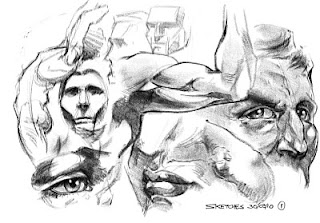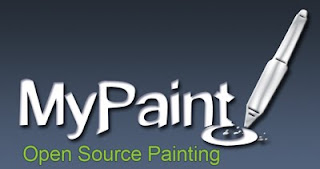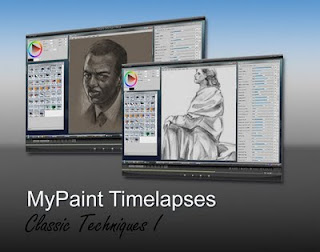Hi!
Ramon Miranda here! Let's talk
about Krita brush sets. The default set is big, not huge... But
certainly big enough so you can get lost easily if you don't spend a lot
of time investigating. But if you dig deep enough, and explore the huge
number of options, you'll find some real gems. So lets see what i have
discovered about one type of brushes: the hairy brushes.
The Default Hairy Brush Set:
After a some thorough and
productive testing time, I got to a point where I managed to get a
predictable and stable performance out of the hairy brushes. the hairy
brushes can be very fast when you tweak some values, and that makes them
more interesting.
The current set is a very good
starting point but I felt I could improve on it. Read on for what I did –
and a sneak preview of the Muses Painting with Krita DVD (which is
getting very close now!)
The Muses Hairy Brush Set:
For starters:
Let's
change the painting mode from Wash to Build-up and link the opacity to
the pressure curve sensor. Now we've got something that quite useful for
expressive painting, but not for a realistic style.
Let's also improve the icons we use a bit. Check out
http://community.kde.org/Krita/Brushes_Preset_Preview for ongoing to work to coordinate the icons for Krita preset packs!
Next: advanced options:
-
Anti-aliasing: I haven´t seen a significant negative impact
on performance and the quality improves a bit at 100% zoom level, so
I've turned this on for all brushes.
-
Most of them use Bristle options/Mouse Pressure. This
parameter uses the speed of the brushtroke to increase the size. I found
it interesting, because we can make more detailed things as we paint
slower.
-
All of them use a bit of Shear parameter to avoid the “superstraight” effect on bristles
-
Also some of these new presets use the Ascension with a not
common ramp. This ramp is useful to constrain the amount of degrees you
can rotate your hand before the brush start to rotate and covers the
Left and Right rotation. You only have to modify the corners points to
make this behavior more sensitive.
Contents of the Hairy Brush Pack
There
are 6 presets that can be clearly identified. I designed them to be
usable not just with a tablet, but also with a mouse – and still keep
most of the appearance of a brushtroke. The description is for generic
use, don't limit yourself!
Hairy_Details:
An easy to use detailing brush. You can see how the size changes if you
go faster. Combined with different pressures and speed you get a lot of
variety in your brushtrokes. Great to create edges and little details
with slow speed.
Hairy_Large: To make backgrounds and cover large areas. It uses “ascension” to make it more versatile.
Hairy_Special_Blender:
Not a common blender! It “paints”, but only with the color that is
below the direct contact point of the stylus: it smears that color
around using the opacity controlled by pressure. Sounds weird? Just give
it a try!
The hairy special blender uses the “ascension” feature to
make it more random and versatile. As you change the wrist angle we
change the “grainy” direction so we can create “rare” patterns if we
want. You'll need a tablet that support tilt to experience the feature,
of course.
If you apply low pressure, you'll achieve a really nice kind of blending with a nice, soft grainy effect.
Hairy_Squared:
This is a Squared Type brush. It can be use as a generic brush for mid
size areas. And with not too much effects on parameters to make it
controllable with a good predictable result like a classical bristle
brush.
Hairy_Tapered:
Creates a tapered brushtroke. You'll get the best results if you
combine pressure with a fast, “gestured” stroke. Moving slowly makes it
usable for details, like edges. Low pressure but fast movement is useful
to cover mid size areas like a glazing with semi translucent
brushtrokes.
Hairy_Texture:
Creates a textured look – a bit like a sponge. The user can control
this effect with bristle options/random offset. Be careful with this
value. Bigger values can decrease performance – but still fun to
experiment with.
You can modify the Density parameter on the Brush
nib to make the “spider-web” look less visible. The “density” controls
the amount of the brush visible parts. Another tweak: you can vary the
“density” bar on the bristle options/density
How to install:
Download
The brushkit ZIP can be downloaded
here.
The brush set is compatible with Krita 2.7 and the current 2.8 development branch.
License : the brushkit itself and thumbnails is released under the
WTFPL 2.0 ( compatible Public Domain and CC-0 ).
Install
Unzip the downloaded zip , and
paste the files into your Krita user preference directory. On Linux,
the Krita preferences are located here :
/home//.kde/share/apps/krita/paintoppresets


































